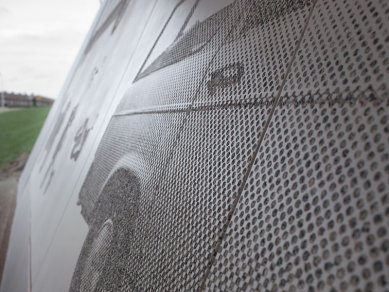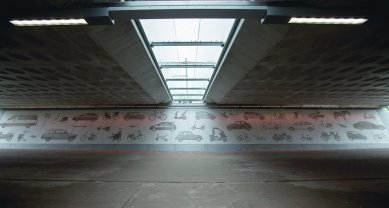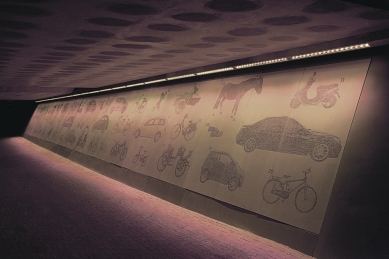
Individual design of visible surfaces
3D Matrix
RECKLI 3D technology is a computer-protected program for converting images using milling techniques onto special boards. The specially created software first converts a photograph into a three-dimensional file.This 3D file with varying texture heights is transferred onto an MDF board, which serves as the primary model for producing the elastic RECKLI 3D matrix. The elasticity, quality, and reproducibility of the matrix ensure an economical execution of the construction. The construction of models allows for the creation of matrices in any size. The use of graphics is not limited in any way, as almost all graphics can be used.
.jpg) |
| Jan Cremer Museum, Enschede, Netherlands |
.jpg) |
| Jan Cremer Museum, Enschede, Netherlands |
RECKLI ARTICO®
Architectural concrete achieved through washed-out graphics.RECKLI artico® offers individual shaping of exposed surfaces. Photographs, images, and individual graphics can be converted using this technique onto exposed surfaces. The play of light and shadow is less significant - unlike in RECKLI graphic representation Foto Gravur. For this reason, RECKLI ARTICO can also be used indoors.
This is a process of applying a setting delay agent onto plastic or magnetic film. The treated film is used during the prefabrication of concrete elements. The hardening of the concrete, along with the retarder, ensures the disruption and washing out of the cement milk only to a depth of 1mm. The difference between the washed area and the hardened concrete, i.e., the effect of light and dark surfaces, creates the desired graphic on the exposed surface.
 |
| ARTICO - Maastricht, Holland |
The English translation is powered by AI tool. Switch to Czech to view the original text source.



0 comments
add comment
Related articles
0
05.08.2017 | <div>Stacked div of many angles</div>
0
09.12.2015 | Photo engraving flawlessly transfers the photograph onto architectural concrete
0
26.10.2015 | <Muzeum architektonických výkresů projektuje i na fasádě> translates to <The Museum of Architectural Drawings is also projected on the facade>
0
07.10.2015 | Concrete blooming facade on the Museum in Bregenz
0
14.09.2015 | Architectural concrete with RECKLI matrices













